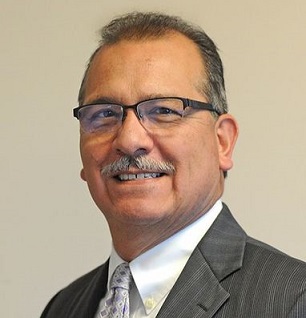
“A lot of it comes down to kids who don’t know what the opportunities are or what it would take to become engineer. We teach them it’s fun being a geek.”
William Tiger ‘81 was surprised to learn he won the 2017 American Indian Science and Engineering Society (AISES) Professional of the Year award.
“I’ve seen over the years people who have won the award. It’s hard to picture myself worthy of that,” he said. “I’m proud and happy, but it was a very humbling experience.”
As the plant manager at GMCH Lockport Components in New York, Tiger has changed the management style at the plant and helped develop a robotics program for underserved Native American students.
At the Lockport plant, Tiger’s leadership approach has led to better problem solving and employee engagement. The facility is on an accelerated curve to incorporate General Motors standards and processes for product launches and the Global Manufacturing System. Tiger has focused on ensuring the employees understand the mission, what to do and how to get there.
As a part of his leadership, management would gather each morning for the shift meeting. Tiger opened up that meeting from mostly salaried employees in a conference room to the a clearing on the floor, which they call Tiger Stadium. Now, the shop committee, team members and group leaders discuss the previous day’s work, safety and quality. Hourly team members or leaders are the ones speaking about their work.
“They are the ones who really know what’s going on in their area,” he said.
Recently, the team leaders explained how they were improving quality and reducing costs to a GM executive who was visiting.
“They are the ones getting the recognition because they did the work. That’s infectious,” he said.
Introducing Native American students to STEM
A member of the Miccosukee Tribe of Indians of Florida, Tiger is bringing robotics to Native American kids to expose them to STEM fields. Native Americans are underrepresented in engineering fields. Although Native Americans make up about 2 percent of the U.S. population, they are about 0.4 percent of all engineers and even fewer in mechanical and electrical engineers.

AISES and the GM Foundation provided a grant to start robotics programs in underrepresented schools. Once the program started, Northrop and Intel also provided money.
“A lot of it comes down to kids who don’t know what the opportunities are or what it would take to become engineer,” Tiger said. “We teach them it’s fun being a geek.”
The program aims to show middle, high school and college-age students what it takes to become an engineer, what the opportunities are and how to get ready.
“Lots of places want to help you succeed,” he said about Native American students. “A lot of companies want to hire you.”
Tiger’s path to Kettering University from Miami started when he tested well in math and science in high school, and he learned he had an aptitude for engineering. But he didn’t know what an engineer did.
Tiger hadn’t heard of Kettering until he received a brochure and a guidance counselor advised him to check it out. Being able to pay his way through school through the co-op program was a big deal, Tiger said. Even more, he’d be able to figure out whether he liked being an engineer. Since he couldn’t decide between mechanical or electrical, he majored in both.
Tiger said he loved his time at Kettering and made some of his closest friends, although the Florida-native didn’t enjoy the weather. The transition from high school to Kettering’s curriculum was tough, he said, but he learned how to learn. In the middle of his first semester, he was failing calculus and chemistry, but calculus became one of his best classes once it clicked.
Tiger said there are additional challenges for minority students, but there’s also help. Organizations like AISES are available for mentoring, tutoring to simply providing someone to talk to.
“Find somebody you can reach out to if you need that. We’re here. We would love to be able to help,” he said. “Especially if you come from distance, that transition to college can be really tough. There are people and groups that want to help you succeed.”